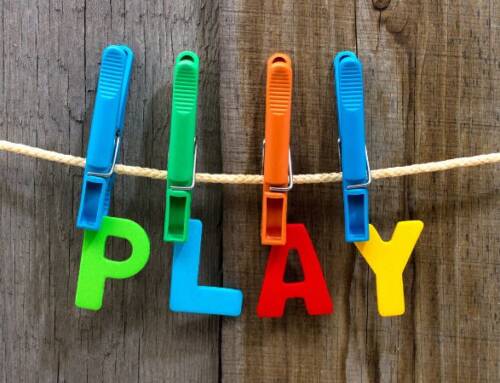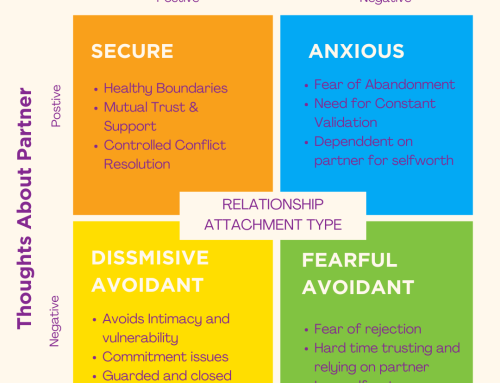
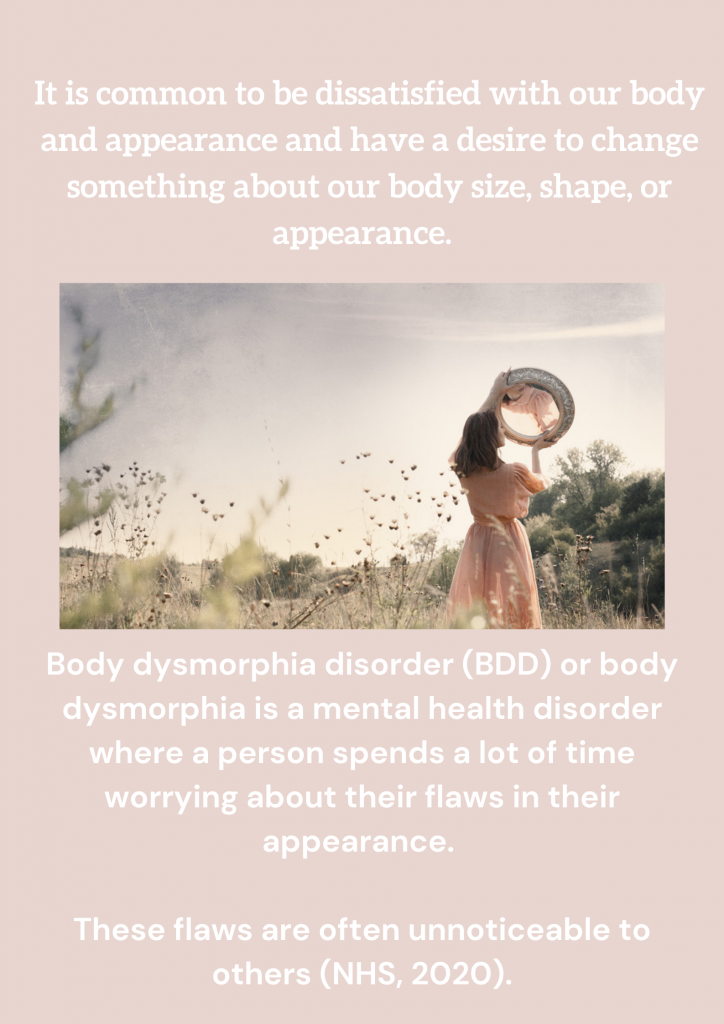

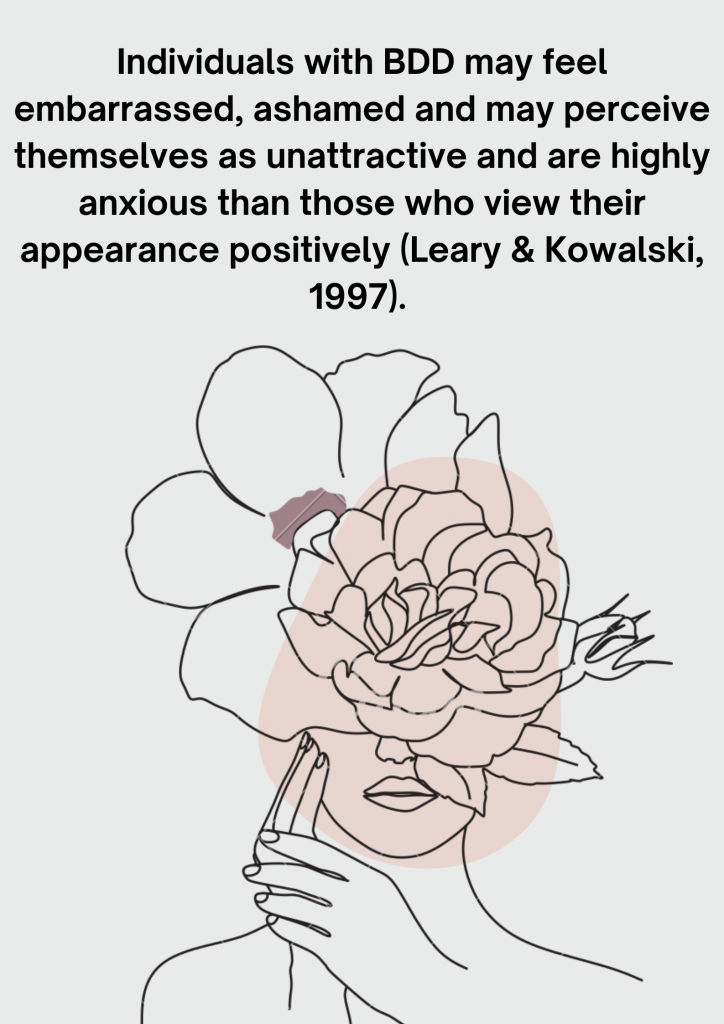



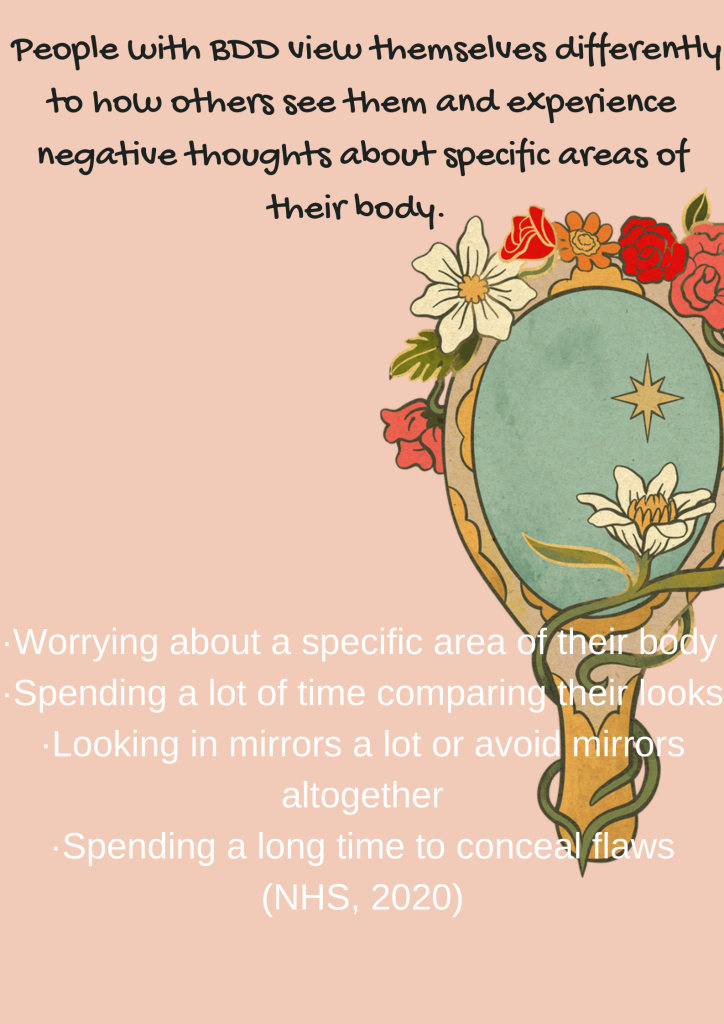
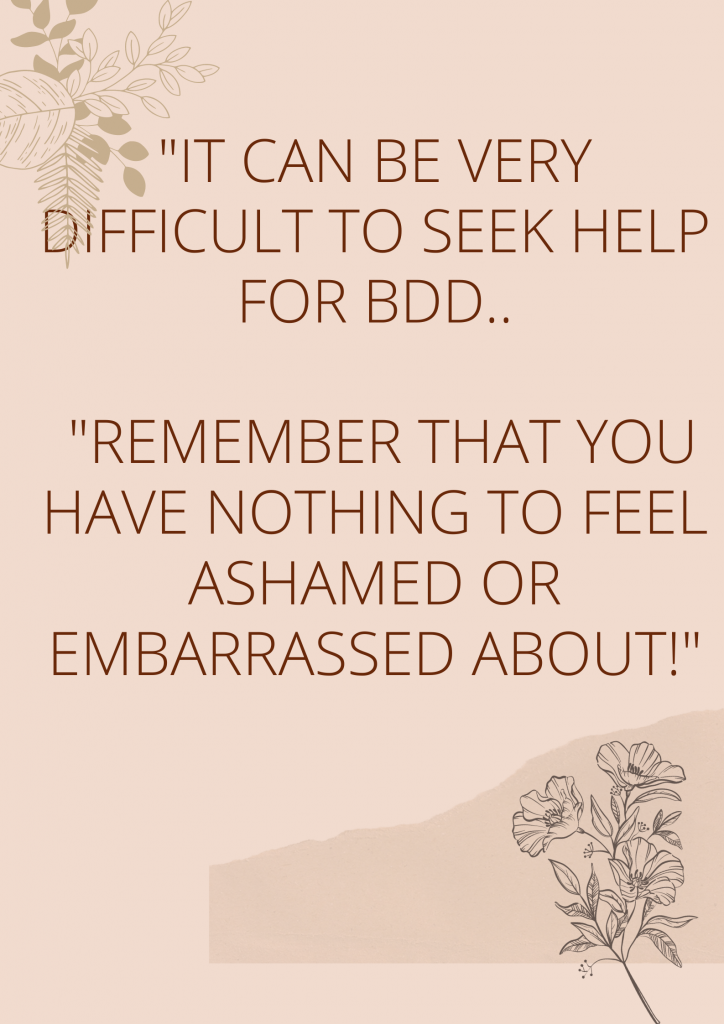

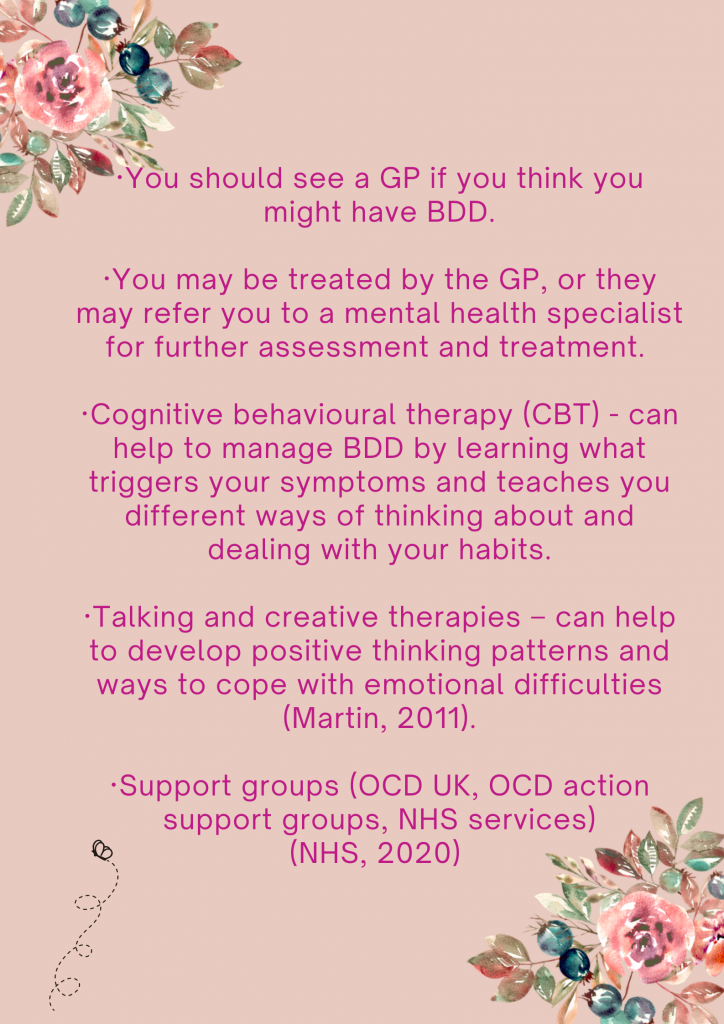
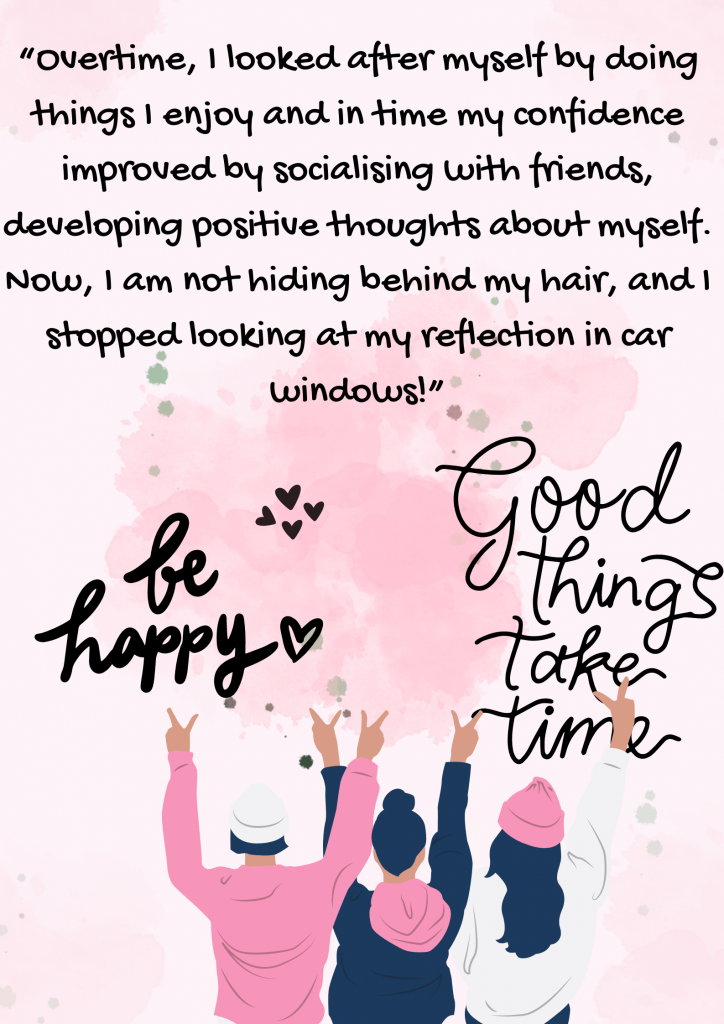


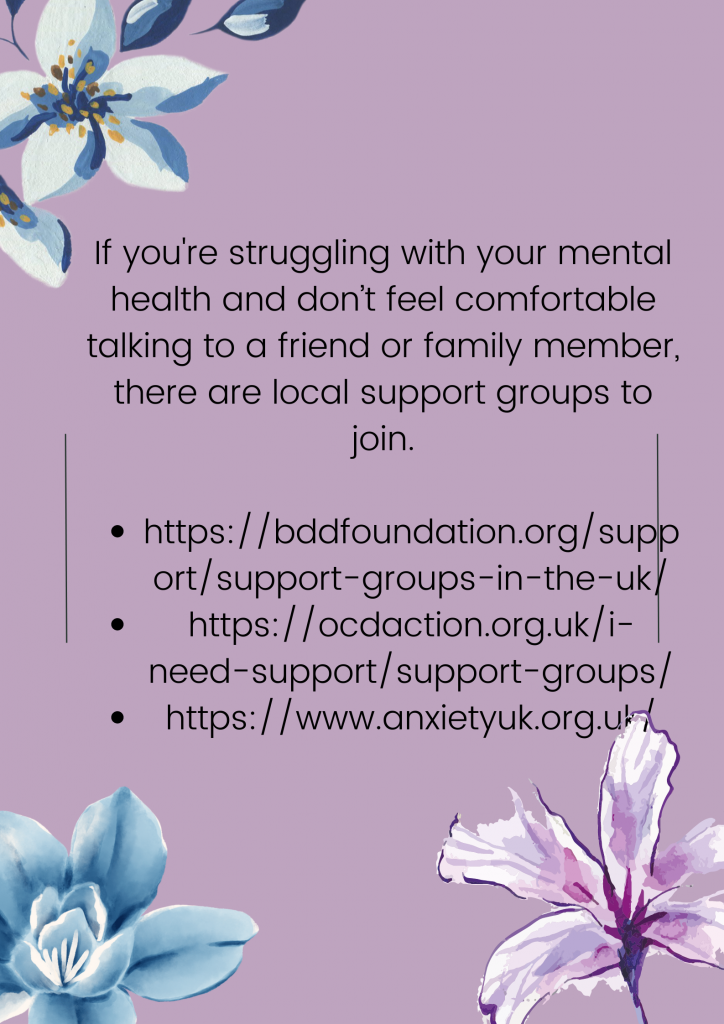

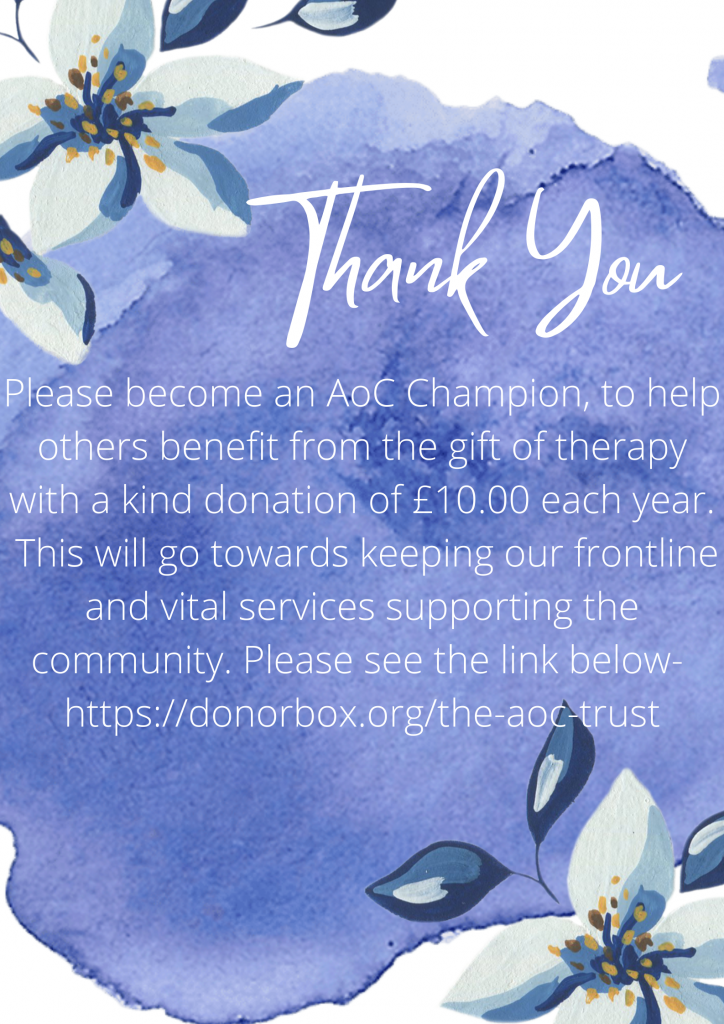
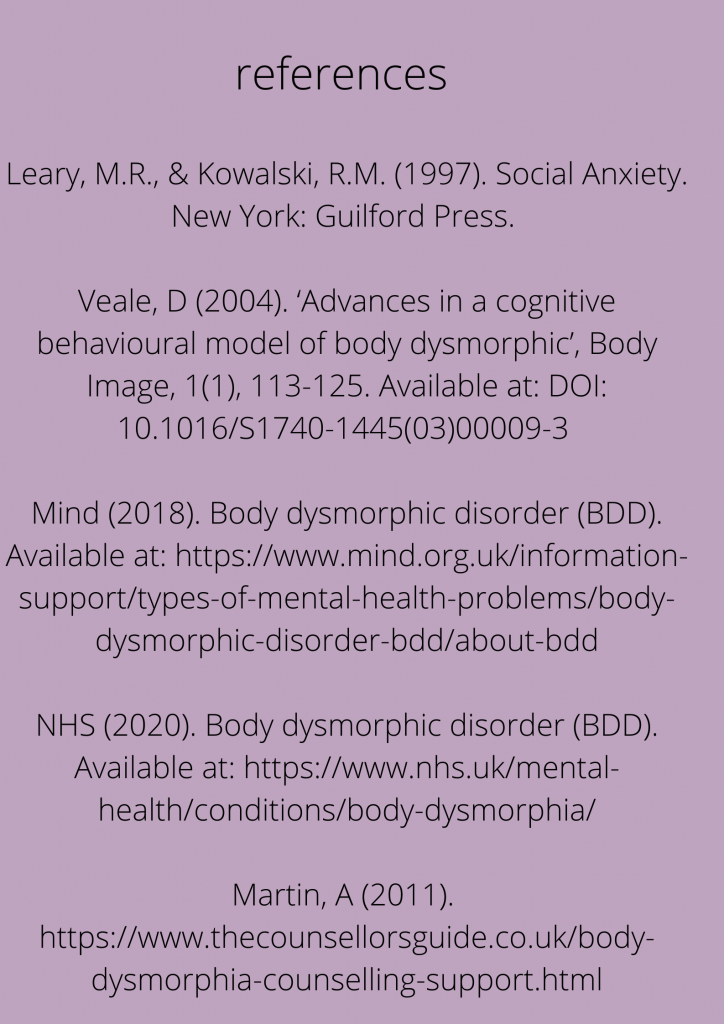
What is body dysmorphic disorder?
It is common to be dissatisfied with our body and appearance and have a desire to change something about our body size, shape, or appearance.
Body dysmorphia disorder (BDD) or body dysmorphia is a mental health disorder where a person spends a lot of time worrying about their flaws in their appearance. These flaws are often unnoticeable to others (NHS, 2020). Any area of the body may be involved, although skin (e.g. acne, scar, wrinkles,), hair, (thinning, body hair,) or facial features are commonly the most concerned. (Veale, 2004). People of any age can have BDD and affects both men and women.
These obsessions may cause emotional distress and have a significant impact on the individual’s ability to carry on with everyday activities (Mind, 2018). Although, it can vary from person to person, and some may find it difficult to socialise and see other people. This can have an impact on people’s work life and relationships.
Individuals with BDD tend to be socially anxious and are likely to avoid social situations, particularly because of the many fears and worries concerning to body image. Individuals who perceive themselves as unattractive tend to have higher social anxiety than those who view their appearance positively (Leary & Kowalski, 1997). For example, a person with BDD may avoid social situations and to avoid making eye contact with others, which can be due to the fear of being criticised of their perceived flaws.
Symptoms of body dysmorphia disorder – People with BDD view themselves differently to how others see them and experience negative thoughts about specific areas of their body.
Worrying about a specific area of their body Spending a lot of time comparing their looks Looking in mirrors a lot or avoid mirrors altogether Spending a long time to conceal flaws (NHS, 2020)
“As a young woman growing up, I felt insecure and worried with my appearance in my weight, facial features, hair, and style of clothing, especially during secondary school and college. I felt judged by others and did not want to socialise with others, and I would hide behind my hair. But overtime, I looked after myself by doing things I enjoy and in time my confidence improved, I am not hiding behind my hair, and I stopped looking at my reflection in car windows!”
It can be very difficult to seek help for BDD, but it’s important to remember that you have nothing to feel ashamed or embarrassed about.
You should see a GP if you think you might have BDD. You may be treated by the GP, or they may refer you to a mental health specialist for further assessment and treatment. Cognitive behavioural therapy (CBT) – can help to manage BDD by learning what triggers your symptoms and teaches you different ways of thinking about and dealing with your habits. Support groups (OCD UK, OCD action support groups, NHS services)
(NHS, 2020)
By taking care of yourself, such as eating healthy and doing something that you enjoy can help manage and improve quality of life (Mind, 2018), including. Eating well Listening to music Yoga Arts and crafts Reading and writing
“Dyeing my hair bright colours helps. It distracts me a little from everything else.” (Mind, 2018)
Remember everyone is unique in their own way, we have different personalities, body types, hair, facial features and skin and we should all feel positive in our own body.
If you’re struggling with your mental health and don’t feel comfortable talking to a friend or family member, there are local support groups to join.
https://bddfoundation.org/support/support-groups-in-the-uk/
https://ocdaction.org.uk/i-need-support/support-groups/
Also, counselling can really help us understand how to take care of ourselves. The Arts of Change provides affordable counselling and therapy for children, young people, adults, and families in West Midlands. Call the team on 01384 211168 for a referral form.
Please become an AoC Champion, to help others benefit from the gift of therapy with a kind donation of £10.00 each year. This will go towards keeping our frontline and vital services supporting the community. Please see the link below-
https://donorbox.org/the-aoc-trust
References –
Leary, M.R., & Kowalski, R.M. (1997). Social Anxiety. New York: Guilford Press.
Veale, D (2004). ‘Advances in a cognitive behavioural model of body dysmorphic’, Body Image, 1(1), 113-125. Available at: DOI: 10.1016/S1740-1445(03)00009-3
Mind (2018). Body dysmorphic disorder (BDD). Available at: https://www.mind.org.uk/information-support/types-of-mental-health-problems/body-dysmorphic-disorder-bdd/about-bdd
NHS (2020). Body dysmorphic disorder (BDD). Available at: https://www.nhs.uk/mental-health/conditions/body-dysmorphia/

